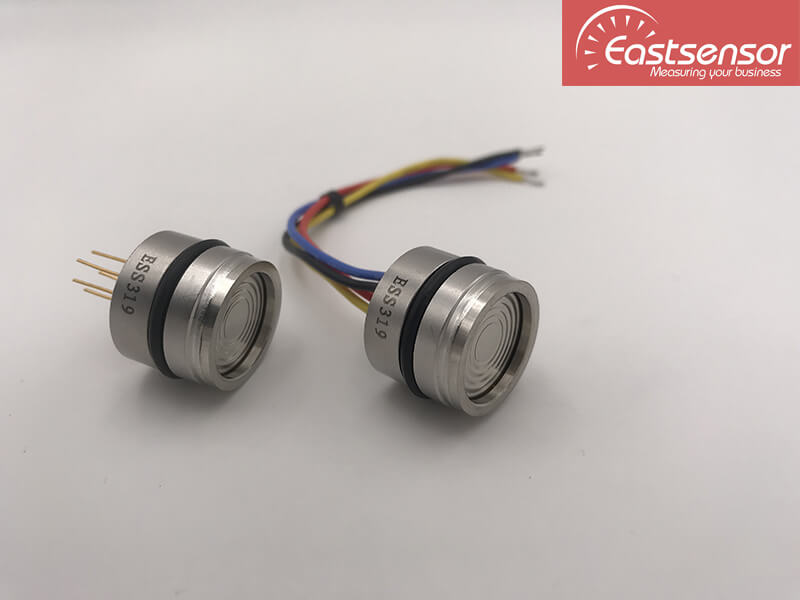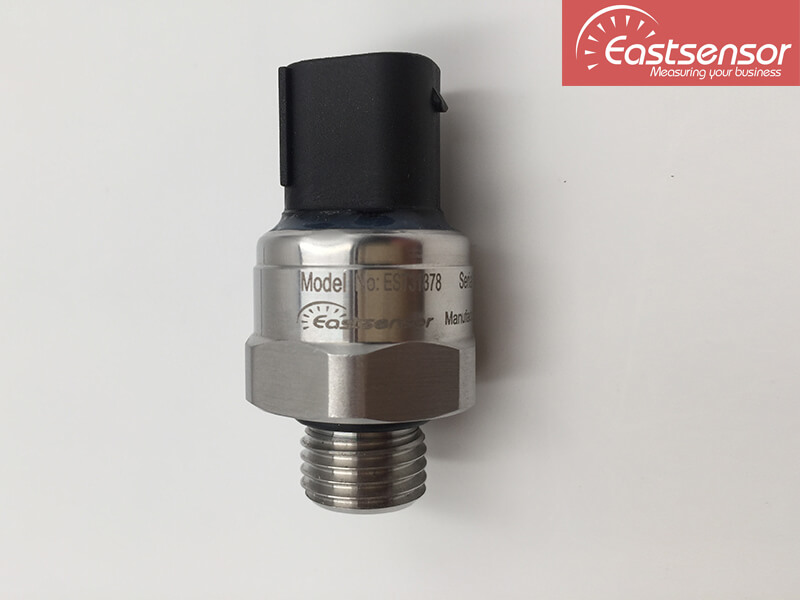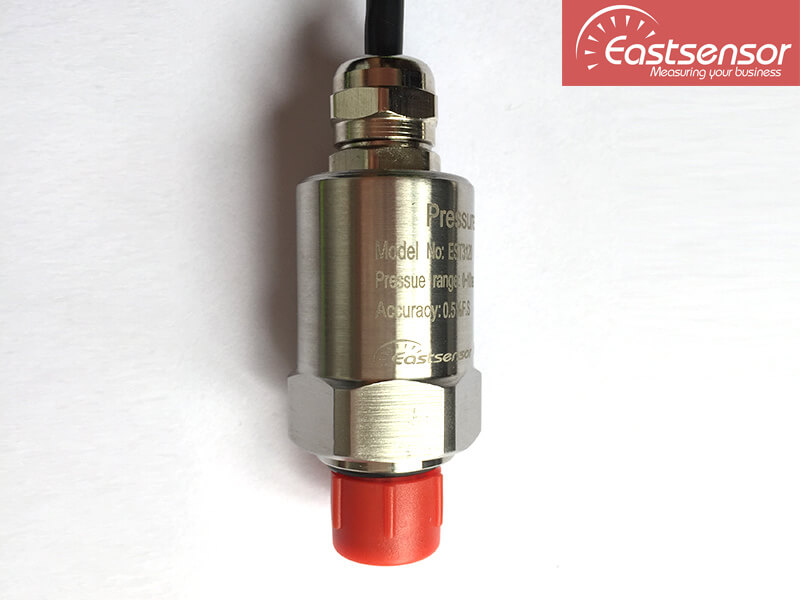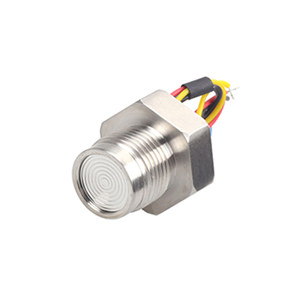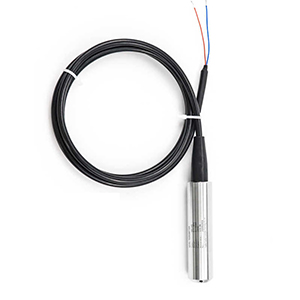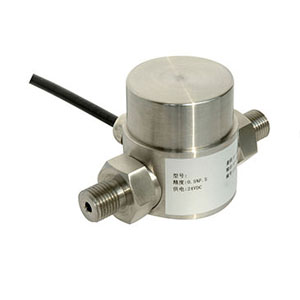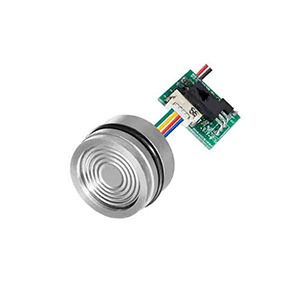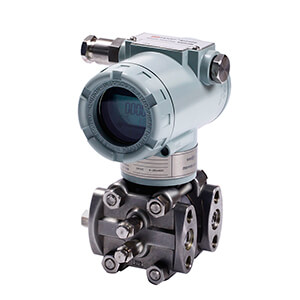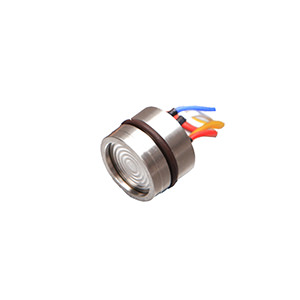You may not surprise, in the process of measurement and control, people have been thinking and talking about
- pressure transmitter,
- pressure transducer and
- pressure sensor
All these three devices can touch, sense the environment we lived, then transfer kind of electrical output signal, it is series activities from physical deformation to electrical signal sensing.
In case of that, sometime some customers or even some junior engineer make no difference among these three device, they always take the three as the same instrument, and some time you may clear know you need pressure sensor only, what on earth is the difference? How to make correct decision to choose the right detector items without cost much?
To comprehending the difference in what these 3 terms mean is necessary to make sure the measurable device picked is right for the end application; particularly when it comes to cost, power excitation, vulnerability to noise, and also constraints around electrical wiring and installment.
In this article, I will certainly disclose the truth of how to conveniently determine which among 3 is best for you and what is the key features to make them differ with each other, all you find here is the industry rarely know, let’s begin.
Output properties
If it is just one rule, you can say that the properties of the output tell which kind the sensor is, to distinguish among the various types, it can be useful to think about
Pressure sensor is the most preliminary but critical sensing unit which followed by the features including the millivolt output (always less than 100mv when 5v or 1.5mA excitation) , relative small size, a little higher accuracy compare to it after assembled as pressure transmitter of transducer.
The working principles of pressure sensor can be categorized silicon piezo-resistive, thin-film sputtered, ceramic piezo-resistive (thick-film), metal capacitive and others, click here to find more details about different pressure sensing technology.
Pressure transduceras kind of pressure detector has been given a voltage output, which might have a size of a couple of millivolts or numerous volts (always 5v, 0.5-4.5v or 100mv).
With signal amplified pcb inside the transducer body, voltage output pressure transducer always work out 0.5-2.5v, 4.5v, 5v or even 10v output, on the contrary, millivolt output pressure transducer with no such amplification process.
Pressure transmitter, on the other hand, takes 10-30vdc as power excitation, and have a present output, normally developed for connecting to the standard 4-20mA present loop, it’ been widely utilized in industrial sensing and control.
Pressure sensor
- The preliminary sensing unit
- 0-100 millivolt output
- Signal without amplified
- Small and compact size
Pressure transducer
- Millivolt or voltage output
- Longer connection distance
- Lower power consumption compares
- Moderate susceptible to noise
Pressure transmitter
- Has more linear ability than traducer
- The longest connection distances
- Strong immunity to noise
- Higher power consumption
Millivolt-output pressure transducer
As remains in the name, these transducers output in millivolts (mV). The output signal is proportional to the power excitation, as an example, if it is 5Vdc power excitation, the output can be 0-50mV with a 10mv/v output signal.
The traditional foil-type strain-gauge sensing units can create an output of concerning 2-3mV/ V, whereas today’s MEMS sensors can give about 20mV/V with excellent linearity. Any variant in pressure is determined by measuring small changes in this voltage, which is a result of tiny modifications in resistance (about 0.1%) in the strain gauges themselves.
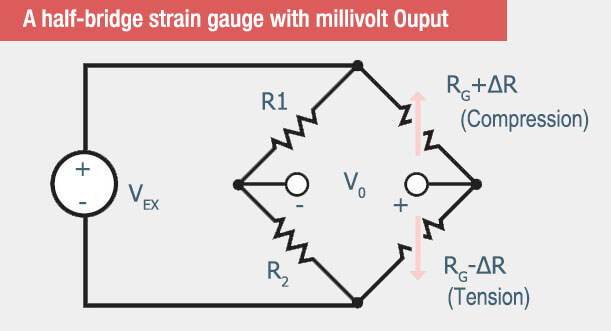
The layout listed below programs a half-bridge strain-gauge type pressure sensor , showing the excitation voltage and also output voltage. A bigger excitation voltage, say 10V as opposed to 3V, creates a bigger output voltage.
Although the output signal of mv type pressure transducer hasn’t been amplified, it also featured a lot benefits such as competitive cost, small but compact size, on the other hand, the mv type pressure transducer provides engineers more adaptability to design the most suitable interface pcb and make it the most suitable performance in measuring process.
However, there are also some disadvantages to think about for mv pressure transducer.
What is the drawback of millivolt-output pressure transducers
- Need regulated excitation: Since the major output is straight proportional to the excitation, the excitation voltage have to normally be produced using a regulated power supply.
- Low noisy sensitivity: Due to the unamplified output signal, the capability of signal transfer is poor which easy affected by noisy, so millivolt-output pressure transducer is not typically suitable for use in electrically noisy environments.
- Short distance connection: As well as due to the fact that the output voltage is attenuated by the resistance in attaching wires, these wires have to be kept short, suggesting that the sensing unit must be close to the surveillance instrumentation. Regarding 3 to 6 meters is normally the maximum practicable distance.
If the link range is short, and noise is not a trouble, a millivolt-output pressure transducer or even pressure sensor can be easy to design-in, please keep it in mind, millivolt-output sensor or transducer needs a regulated power supply to avoid variations in the excitation which may impact the output in response.
You can also click here to check our previous content : Why you need Millivolt Output Pressure Transducer
Voltage-output pressure transducer
A voltage-output transducer contains extra signal boosting to boost the output voltage of the bridge to a larger amount such as 5V or 10V.
Having a larger output, voltage-output transducers are less susceptible to noise, allowing for usage in harsher electric atmospheres. Longer attaching wires can be made use of, enabling the sensor to be additionally from the panel.
Supply voltages are typically from 8-28VDC. This allows the use of a lower-cost unregulated power supply, other than where the output is 0.5-4.5 V, which calls for a 5VDC controlled supply. Reduced current usage implies voltage output pressure transducer can be powered by battery.
A while back, no matter the traditional voltage-output pressure transducer or current-output pressure transmitter, they both no “live zero”, that means zero pressure, zero output.
However the risk with these is that the system can’t identify the difference between zero pressure or a malfunction, both case will provide zero output.
What is more, the voltage-output pressure transducer enhances the bridge signal, making it a great selection where longer cable television lengths are needed. Reduced noise vulnerability, and a lower-cost uncontrolled power supply are added advantages.
Still have question about the output for pressure transducer, you can refer to our previous article about: What do you use for pressure transducer output?
Current -output pressure transmitter
In contrast to a voltage-output pressure transducer, the pressure transmitter has a low-impedance current output, it usually has been designed to transfer analogue 4-20mA signals. The output might be developed for usage with either a 2-wire or 4-wire present loophole, as both types are popularly adopted throughout our daily life.
4-20mA pressure transmitter supply good electrical noise resistance (EMI/RFI), making them the best choice when the signal must be transfer in very long distance. The current-output pressure transmitter can be powered by an unregulated excitation, so accordingly the current-output type pressure transmitter is generally inappropriate for battery powered devices when running at complete pressure.
A pressure transmitter converts the voltage output to an existing signal, commonly 4-20mA. Noise sensitivity is exceptionally low as well as wire sizes can be a number of hundred meters (1000m-5000m) if no more consideration or power consumption.
Case Study: 4-20mA output pressure transmitter

Like the diagram show above, when the fluid passing through the duct produce 10bar pressure, a 4-20mA current output pressure transmitter has been calibrated to measure which process, the output signal can be sent from pressure transmitter that is proportional to the pressure exerted by the fluid.
| mA | Percentage | |
| 1 | 4mA | 0% |
| 2 | 8mA | 25% |
| 3 | 12mA | 50% |
| 4 | 16mA | 75% |
| 5 | 20mA | 100% |
If no fluid passing through, there will be no pressure at all, the pressure transmitter then generate 4mA current output signal, on the other hand, if the full fluid through the duct, it may occur the maximal 10bar pressure which sensed by the pressure transmitter through diaphragm deformation extent, a 20mA current output signal will be sent out to the terminal, in case of that, it is easily get the conclusion that the input car of controller may be broken if no current produced.
At the same time, if the input card of controller receives any amount of current output from 4 to 20mA, a 250 Ohm resistor can make current signal converted to certain voltage proportionally. As usual, the ADC can process the voltage from range 1-5V, so here we can easily understand 4-20mA is reasonable to use without any doubt.
We can then make the conclusion that, 4-20mA currently type can help us
- Easily detect open circuit problem, if 0mA, it will difficulty to know whether wire problem or no pressure exerted at all.
- Easily convert current signal to 1-5Vdc.
Click to find out more details of how 4-20mA pressure transmitter works
Why need 4mA instead of 3mA or 1mA?
The pressure transmitter was working on basis of pneumatic measurement when it is firstly introduced to the industry, later on, when electronics come up to manufacture, it require at very least of 3mA to active the function, on the safe side, 4mA with little margin has been proved workable.
We use 4mA as live zero, if it too small mA like 1mA, the output current will be too undetectable or even no current at all, then more wires (3 or 4 wires) instead of 2 will requested for filed instrument which will rise the cost at some extent.
Why need 20 mA instead of 21mA or 22mA?
Taken 20mA as maximal level because on hand hand, it is energy efficiency, on the other hand, 20mA is most safety range for human hart to withstand (30mA will be kind of dangerous)
When to use current signal output instead of voltage
-
- 4-20mA current output signals often has more linear ability than the voltage output signal.
- 4-20mA current output signals has low impedance and be better noise immunity.
- 4-20mA current output signals pressure transmitter can transfer the signal to long distance usually more than 1km.
- 4-20mA current output signals is safe for human to withstand even the excitation is 24v or 30vdc
- 4-20mA current output signals is intrinsically safe for hazardous location.
You can also click here to check our previous content :
What is The Difference between Pressure Transducer and Pressure Transmitter?
How to choose the right one
You may now understand that both pressure transducer and pressure transmitter are derive from pressure sensor, they all can be produced out based on the material of silicon or ceramic, designed abide by the principle of piezo-resistive or capacitive, used to measure pressure or level, sent signal either voltage or current.
For better understanding, we wrap up the main features of each in below chart.
| Millivolt pressure transducer | Voltage pressure transducer | Current pressure transmitter |
| Signal without amplified | Moderate susceptible to noise | 4-20mA is used in everywhere |
| The lowest cost | Longer connection distance than millivolt pressure transducer | Pressure transmitter has more linear ability than pressure traducer |
| For short distance connection (always 3-6 meters) | Shorter connection distances than pressure transmitter | The longest connection distance (always 1-5km) |
| Sensitive to noisy | Lower power consumption compares to pressure transmitter | Strong immunity to noise |
| Needs regulated voltage (stable bridge-excitation) | Needs unregulated bridge-excitation voltage | Higher power consumption than pressure transducer |
Except the output types for pressure measurement, you can also find more details by clicking here to find out what else need to keep in mind when choose pressure transmitter.
We can help you in Eastsensor
In Eastsensor, our experienced technical expert will be on your assistance anytime, and to help you get out of the question and problem with all they have.
ESS3 series pressure sensor always produces 50 to 100 mv as output signal (before amplified), like ESS319 for gauge pressure, ESS320 for differential pressure, ESS319T for pressure and temperature together, they all with mv output less than 100 usually.
| Model | Range | Diameter | Type | Accuracy/FS | Input | Output |
| ESS312 | 0-10bar-1000bar | 12.6mm | G/A/S | 0.1%-0.2% | 1.5mA/5V/10V | ≤150mV |
| ESS319-7 | 0-0.07bar | 19mm | G | 0.1%-0.2% | 1.5mA/5V/10V | ≤150mV |
| ESS319 | -1bar-0.1bar-1000bar | 19mm | G/A/S | 0.1%-0.2% | 1.5mA/5V/10V | ≤150mV |
| ESS319-I2C | -1bar-0.1bar-1000bar | 19mm | G/A | 0.3%-0.5% | 3.3V/5V | ≤150mV |
| ESS319T | 0.1bar-30bar(Pressure) | 19mm | G/A/S | 0.25% | 1.5mA/5V/10V | ≤150mV |
| -104'℉-185'℉(Temperature) | 0.50% | |||||
| ESS319I | -1bar-0.1bar-1000bar | 19mm | G/A/S | 0.20% | 10-30V | 0.5-4.5V/4-20mA |
| ESS320 | 0-0.35bar-35bar | 19mm | D | 0.1%-0.2% | 1.5mA/5V/10V | ≤150mV |
| ESS322 | -1bar-0.1bar-1000bar | 28mm | G/A/S | 0.1%-0.2% | 1.5mA/5V/10V | ≤150mV |
| ESS323 | -1bar-100bar | 19mm | G/A/S | 0.1%-0.2% | 1.5mA/5V/10V | ≤150mV |
| ESS331 | 0-5bar-100bar | 29.5mm | G/A/S | 0.1%-0.2% | 1.5mA/5V/10V | ≤150mV |
| ESS332 | -1bar-0.1bar-35bar | 19mm | G/A/S | 0.1%-0.2% | 1.5mA/5V/10V | ≤150mV |
| ESS350 | 0-0.35bar-60bar | 50mm | G/A/S | 0.20% | 1.5mA/5V/10V | ≤150mV |
| ESS343 | 0-100pa-400bar | 35mm | G/A/S/D | 0.1%-0.2% | 10-30V | 4-20mA/HART |
| ESS01 | 0-2bar-2200bar | 19mm | G/A/S | 0.05%-0.075% | 1.5mA/5V/10V | ≤150mV |
EST3 series pressure transducers always adopt either 10-30v unregulated voltage or 5v regulated voltage as excitation, produce output signal of 4-20mA and 0.5-4.5v in response.
| Model | EST3110 | EST3110 B | EST3120 |
|---|---|---|---|
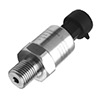 | 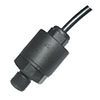 | 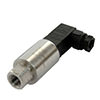 |
|
| Data Sheet | Download | Download | Download |
| Range | 0~5bar…50bar | 0~5bar…50bar | 0~5bar…50bar |
| Accuracy | ±1.0% | ±1.0%,±4.0% | ±0.25%,±0.5%,±1.0% |
| Power Supply | 10~30Vdc | 12~30Vdc | 10~30Vdc,5Vdc |
| Output | 4~20mA,0.5~4.5V | 4~20mA,0.5~4.5V | 4~20mA,0.5~4.5V |
| Electrical Connection | Packard | M12X1/ GX12/16-7 | DIN43650, IP65; GX 16-7 |
| Pressure Connection | G1/4, NPT1/4, 7/16-20UNF | G1/4, NPT1/4, 7/16-20UNF | M20 x 1.5, G1/4, G1/2, NPT1/4, 7/16-20UNF |
| Ingression Protection | IP65 | IP45/ IP65 | IP45/ IP68 |
| Model | EST3122 | EST3135 | EST3123 |
|---|---|---|---|
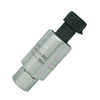 | 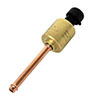 | 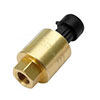 |
|
| Data Sheet | Download | Download | Download |
| Range | 0~5bar…50bar | 0~5bar…50bar | 0~5bar…50bar |
| Accuracy | ±0.5% | ±1.0%,±2.0% | ±0.5%,±1.0% |
| Power Supply | 10~30Vdc,5Vdc | 5±0.25Vdc | 5Vdc |
| Output | 4~20mA,0.5~4.5V | 0.5~2.5…4.5Vdc | 0.5~2.5…4.5Vdc |
| Electrical Connection | Packard, DIN43650 | Packard | Packard |
| Pressure Connection | 7/16-20UNF, 9/16-20UNF | Cooper Pipe Connection | 7/16-20UNF, 9/16-20UNF, M20 x 1.5, G1/4 |
| Ingression Protection | IP65 | IP65 | IP65 |
EST4 series smart pressure transmitter is based on metal capacitance sensing, the output can be 4-20mA with HART.
| Span and Measuring Range | ||||||
|---|---|---|---|---|---|---|
| Span | Pressure Range | Level Range | GP | AP | DP | HP |
| 2 | 0ー0.1~1.5kpa | 0-10~150mmH2O | * | * | ||
| 3 | 0ー0.7~7.0kpa | 0-70~700mmH2O | * | * | ||
| 4 | 0ー4.0~40kpa | 0-400~4000mmH2O | * | * | * | * |
| 5 | 0ー20~200kpa | 0-2000~20000mmH2O | * | * | * | * |
| 6 | 0ー70~700kpa | 0-0.7~7kgf/cm2 | * | * | * | * |
| 7 | 0ー210~2100kpa | 0-2.1~21kgf/cm2 | * | * | * | * |
| 8 | 0ー700~7000kpa | 0-7.0~70kgf/cm2 | * | * | * | |
| 9 | 0ー2.1~21Mpa | 0-21~210kgf/cm2 | * | * | ||
| 0 | 0ー4.1~41Mpa | 0-41~410kgf/cm2 | * | |||

